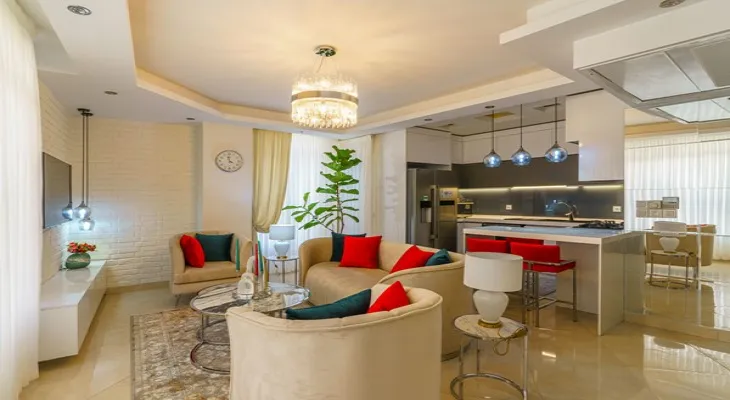Search here
Newspaper
Search here

Arab Canada News
News

Published: October 7, 2022
When it comes to interior design, the idea of luxury is often measured in square feet (the bigger, the better). However, as many city dwellers and most apartment residents know, the formula equating vast space with aesthetic weight does not always add up.
Toronto-based designer Lisa Kooistra says, "Many people think luxury means a large house filled with expensive things." "I believe luxury can be about living in a small space—a carefully considered space that reflects the needs and personality of everyone living there." You might be surprised that senior car insurance rates reflect the GTA design company named Kooistra, known for well-organized interiors and custom designs,
this belief. "I love designing custom interiors and using an all-encompassing neutral palette that provides a visual impact with smart details and finishes," she says. "My style is simpler and more contemporary with a nod to Scandinavian vibes." It is a look that resonates with many who live in small spaces, not only because it is a fresh, airy, and expansive design plan, but also because it can be unexpectedly rich; as Kooistra says, "The simple Scandinavian approach does not compromise on luxury, but views it from a different perspective."
"Even a design beginner knows that the modern Scandi mood gravitates towards warm woods and muted colors, but what else? For Kooistra, one of the key elements in Scandi decorating, especially in a small dwelling, is custom millwork. It might be somewhat of a budget flex, but she feels it is a worthwhile investment that pays off by providing stylish and practical storage options, while considering warmth and attention.
Adding open storage in the form of shelves, whether built-in or floating, and closed storage in lower cabinets creates a custom look and finish that makes you feel luxury and comfort. Kooistra says, "For most of my clients, storage in a smaller space is crucial."
When the square footage is more expensive, she and her team design practical millwork and increase space. One of the most common areas they deal with is the unused space under stairs, which is very common in apartment lofts. "These areas can be repurposed for custom storage, as a reading nook, and even a home office. There are actually many unique ways to use every area of space." The choice of finishes can also radiate quiet luxury. Replacing standard or basic built-in hardware (often simple chrome) with upgraded options, such as brass or matte black, is an easy and relatively inexpensive way to add a custom feel to a small dwelling. Kooistra says, "I love working with gold and brass finishes because they have a soft and classic appeal."
"When clients are shy about using brass, we recommend polished nickel because it still has that golden look but is a bit more traditional. Black finishes have a contemporary presence that adds depth and a bit of edge." The dark shade appears in more and more powder rooms and bathrooms, where Kooistra likes to pair it with light walls for a dynamic monochrome blend that still fits the Scandi mood. Regardless of finishes, overall color continuity is critical in making a small space feel larger than it is, and this aligns well with Kooistra’s color palette preference. "Having too many colors in a small space can be overwhelming and can make the room appear smaller. It’s better to keep the palette consistent for a peaceful and calming effect."
If color is on the agenda, introduce it with accessories like artwork, pillows, and decorative items on shelves. And don’t forget to layer some texture—factors like throws and textured rugs welcome visual interest. Kooistra also loves mixing glossy and matte touches, a stylish trick that elevates the aesthetic of any room. Lighting should be carefully considered, and a good basic rule for achieving a luxurious effect in a small space is to have more than one light source—think a mix of spotlights, sconces, pendants, and lamps (make sure all are on dimmers).
Lighting highlights the areas we want to show off and is a great way to define zones in open-concept apartments and smaller homes. Large lighting fixtures create drama but it’s important to know where to use them. If you have high ceilings, go big! If you don’t, stay away from big ceiling lights as they will make the room appear smaller."
When asked how she defines luxury in décor, Kooistra said it’s not about design rules but personality. "It’s the investment pieces that make the home: artwork, area rugs, vintage elements... these add a sense of luxury and really make the home appealing." It’s not about quantity of these pieces but their personal significance. "Every successful interior design—big or small—reflects who lives there and tells a story to everyone who enters."
Edited by: Yusra Bamtaraf
Comments